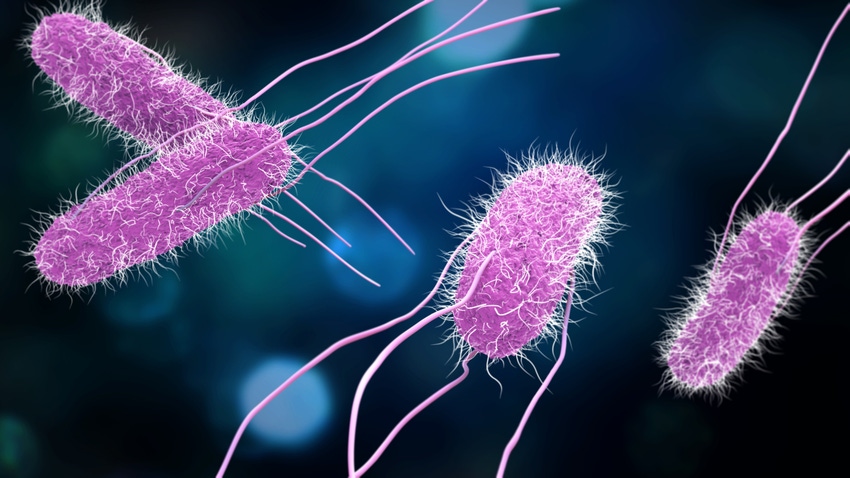Genomic tool to lead to better salmonella detection
Whole-genome sequencing may more precisely identify particular strain of salmonella to determine origin and path of outbreak.
July 26, 2019

The world’s food supply will become safer as the food industry shifts to high-resolution, whole-genome sequencing, which examines the full DNA of a given organism all at once, according to Cornell University, noting that the move to make sequencing ubiquitous will lead to a consistently reliable method of salmonella detection.
A paper published July 12 in the journal Frontiers in Microbiology — co-authored by researchers from Cornell and the Mars Global Food Safety Center (GFSC) in Beijing, China — illuminates the breakthroughs, Cornell said.
“Salmonella is the foodborne pathogen with the biggest public health and economic impact globally. It’s one of the major causes of diarrhea all around the world,” said Martin Wiedmann, the Gellert family professor in food safety and Cornell Institute for Food Systems faculty fellow. “Salmonella can be mild, or it can cause death, as its severity depends on salmonella’s serotypes [distinct variations] — and that’s what we’re trying to find out.”
Cornell said the paper describes how the food industry around the world should use molecular methods more often for subtyping and characterizing salmonella. The paper compared older subtyping practices — some going back to the 1930s — to the newer whole-genome sequencing, which can analyze a wider, more complete swath of the genome.
With this technique, scientists can more precisely identify a particular strain of salmonella and determine the origin and path of the disease’s outbreak, Wiedmann said.
For example, in early July, the U.S. Food & Drug Administration and the Centers for Disease Control & Prevention (CDC) used the technique as they began investigating a suspected salmonella link between humans and pig ear treats for dogs — due to people handling the treats.
“Whole-genome sequencing is rapidly becoming the method of choice for salmonella subtyping,” said microbiologist Silin Tang, the paper’s lead author and senior research scientist at GFSC. “Foods often reach the consumer through increasingly complex supply chains, creating many opportunities where food safety could be compromised. Recent cases highlight the need to reinforce salmonella control measures in the food industry, including rapid and accurate tracking of contamination sources with appropriate subtyping tools.”
Tang said there is an opportunity for the food industry to create a talent pipeline of expertise in bioinformatics — the use of software tools to understand biological data — to harness the full potential of whole-genome sequencing technologies.
Further, Wiedmann said, this paper represents the translation of academic analysis into a useful industry application. “This will help industry implement better ways to proactively address the complications and complexity of salmonella,” he said.
In addition to Wiedmann and Tang, co-authors of “Assessment & Comparison of Molecular Subtyping & Characterization Methods for Salmonella” are Cornell senior researcher Renato Orsi and Hao Luo, Chongtao Ge, Guangtao Zhang, Robert C. Baker and Abigail Stevenson of GFSC. The research was funded by the Mars center.
Source: Cornell University, which is solely responsible for the information provided and is wholly owned by the source. Informa Business Media and all its subsidiaries are not responsible for any of the content contained in this information asset.
You May Also Like



